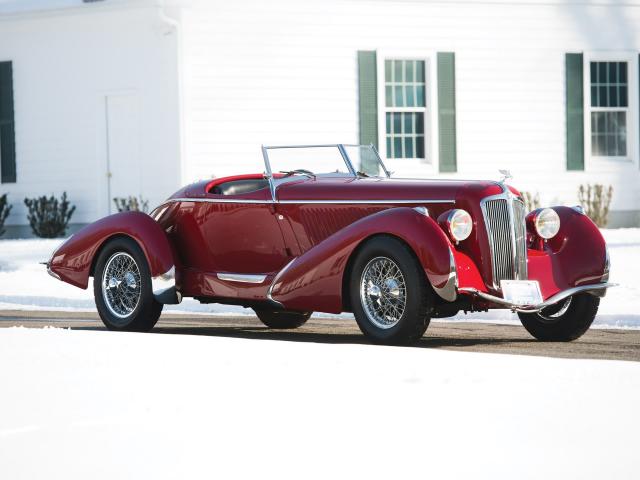1935 Amilcar Type G36 Pegasé Boattail Roadster
- Brand: Amilcar
1935 Amilcar Type G36 Pegasé Boattail Roadster in the style of Figoni et Falaschi
The Societe' Nouvelle pour l'Automobile was founded in 1920 in the Paris suburb of Saint Denis to 'make sporting voiturettes', or small cars. Together with Salmson, the Amilcar was the quintessential French small car of the 1920's. Amilcar was the amalgam of the two bakers' names; Joseph Lamy and Emile Akar. The first car was designed by Edmond Moyer who worked for Citroen. Production of automobiles was always limited in number and in the late-1930's, the French company was taken over by Hotchkiss. The Amilcar was gone after 1930.
The first Amilcar was produced in 1921 with a four-cylinder engine and door-less, two-seater torpedo bodies. The brand offered increasingly sporty cars and entered automobile racing in the mid-1920s with a group of supercharged dual overhead cam six-cylinder cars. In the late 1920s, the line was expanded further with the introduction of a light touring car. The company merged with Hotchkiss in 1937 but stopped production in 1939 with the outbreak of war. It never resumed production.
The Pegase Grand Prix was introduced as a 'competition voiture' at the 1936 Paris Auto Show. It was powered by a Baby Lago Talbot dual overhead cam 2.7 liter 4-cylidner Delahaye 'Grillot' designed engine of which only eight were built. Only four Pegase Grand Prixs were built, two of which are roadsters. The cars were fitted with Delahaye 135M four-speed transmissions, running gear and hydraulic brakes due to the strong influence Delahaye exerted over the firm in its last days.
This Amilcar was acquired in the early 1990s by Malcolm Pray from the estate of Paul Myers, through Robert Cole. It was built by combining sporty equipment from various eras. Power is from a four-cylinder Talbot-Lago T-14LS engine and the four-seed transmission is belived to have been sourced from an Alfa. The modified chassis incorporates original 1930 components, and it is equipped with modern hydraulic brakes. The bodywork has long been attributed to the designs of Figoni et Falaschi, but to some, it is more reminiscent of the Auburn bodies built in Indiana. There are sliding vertical hood props, chromed door latches, a folding hook with which to lift the convertible top, 'moustache' bumpers, a boattail rear, and fenders that are edged in chrome. The interior is upholstered in black leather and the body is finished in Figoni color of Andalouse Red. There are chrome wire wheels and blackwall tires.
Since the car's restoration it has been driven just 967 miles.
Descriptions & pictures by conceptcarz & flickr & silodrome & rmsothebys
| Specification | |
| Production Start | 1935 |
| Country of origin | France |































